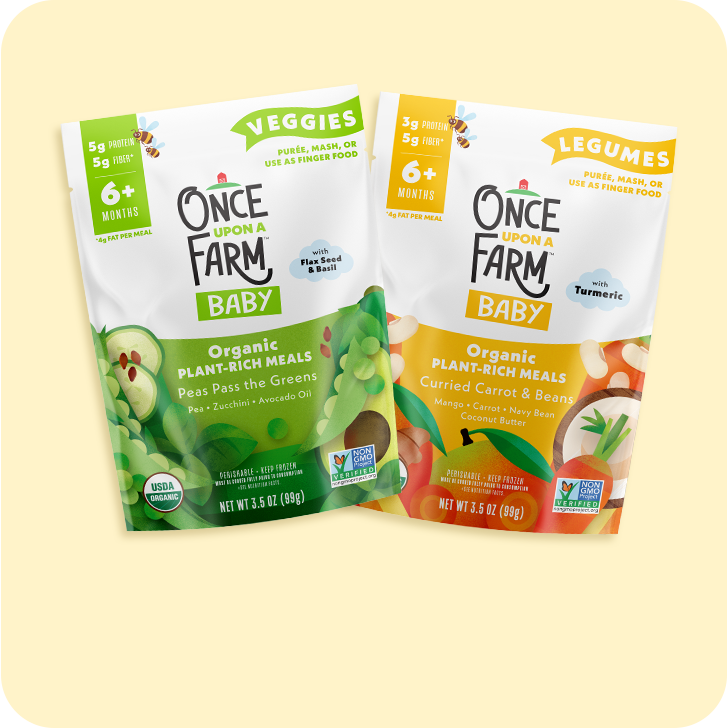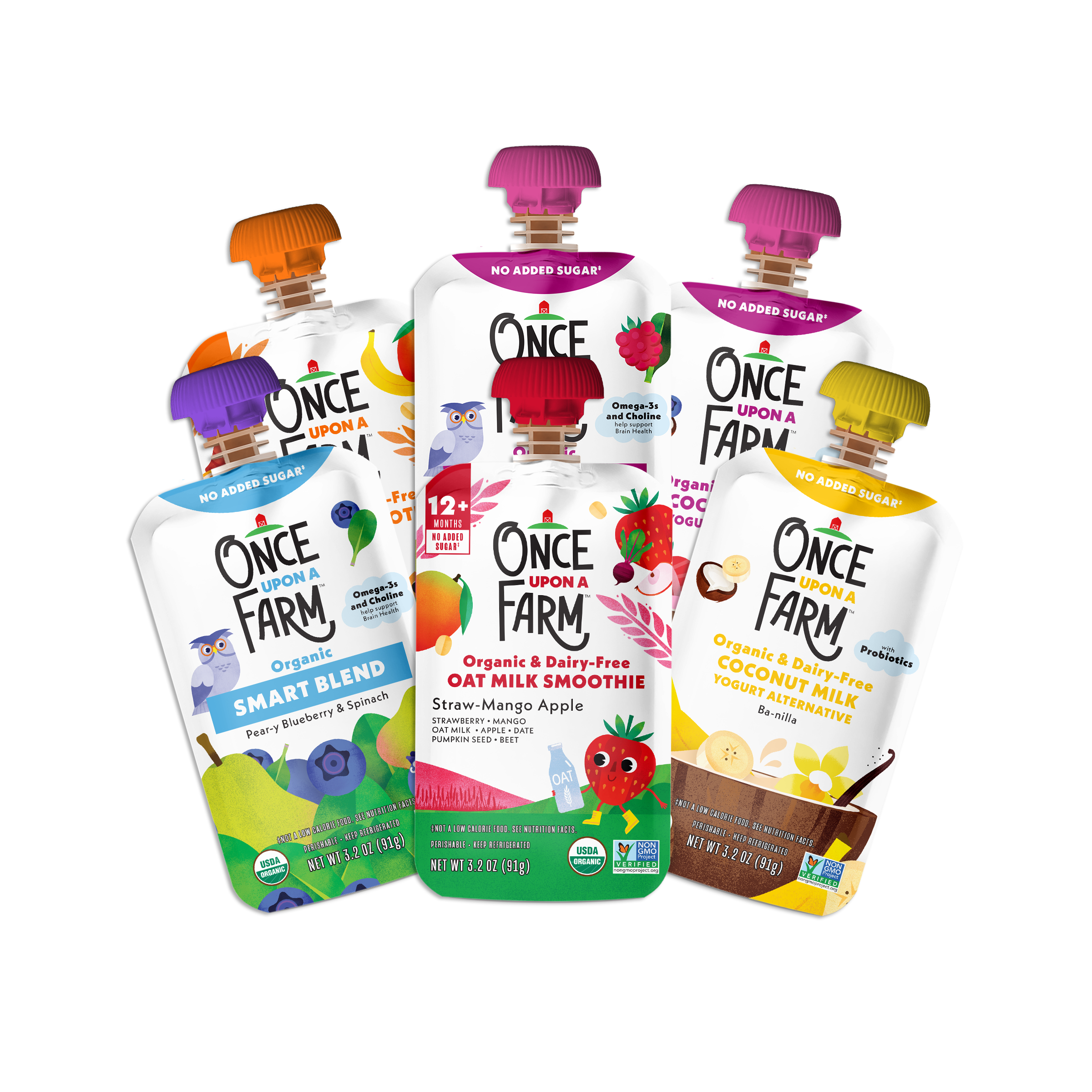Kids are back in school, but they’re not the only ones learning! Being a parent is a constant learning experience. And when it comes to food and nutrition, we’re always eager to know more. What foods are best for our kids? What do I need to know about starting solids? The list goes on… From baby’s first bites to school snacking, here are some tips to help fuel your kids and inspire a lifetime of healthy eating.
A is for Antioxidants
Naturally occurring in many whole foods, antioxidants help our body fight off damage-causing free radicals. Our favorite sources of antioxidants include fruits like blueberries, cherries, and strawberries.
B is for Bite
We love the one-bite approach—especially when introducing new foods or reintroducing a food your child has previously shown a distaste for. Simply asking them to try one bite can help make progress toward accepting that food. You can always offer a non-food-based reward (like a sticker) as an incentive. Here are some more tips for getting your kids to love veggies.
C is for Clean
Our babies and kids deserve the best. While organic is in our name, we go far beyond that promise. Our products are free of preservatives, GMOs, added sugar, and artificial ingredients. And when it comes to clean, we test for heavy metals, pesticides, and other contaminants. We ensure safety and quality by requiring our suppliers to test, testing internally, and working with Clean Label Project for independent, 3rd party testing (and certification!). Learn more about our commitment to clean.
D is for Decisions
As early on in their feeding journey as possible, let your kids have a say in what they’re eating. As infants, this could look like presenting them with a couple different veggies at once and letting them pick and choose which they’d like to eat first.
E is for Embrace the Mess
Kids are messy—and nowhere is that more evident than when they’re eating. But mess comes with the territory of learning to feed yourself and enjoy foods. Let the mess happen—don’t stress about wiping down between each bite—and worry about the cleanup later. It’ll make mealtime much more enjoyable for everyone!
F is for Fresh
We love including as many fresh fruits & veggies as possible in our kids’ diets. We designed our products to be as close to homemade as possible—using cold-pressure processing (HPP) to get rid of harmful bacteria while preserving farm-fresh taste and nutrients.
G is for Gradually
Start slowly with small amounts, when it comes to introducing your baby to solid foods, then gradually work your way up as your baby starts to accept a new food. “I would say a few bites once or twice a day is enough in the beginning, but make sure you keep increasing the amount!” says Once Upon a Farm Ambassador Rachel Marrero.
H is for Healthy
Healthy eating habits can start as soon as a baby starts solids. By providing nutritious meals, encouraging fruits & veggies, and helping them build a positive relationship with food, you can help set your little ones up for a lifetime of healthy eating.
I is for Individualized
There’s no one-size-fits-all approach to food, so keep in mind that no one knows better than you (and your child’s pediatrician) when it comes to your children.
J is for Joy
Make food fun! Our goal should be to help our kids build a healthy, positive relationship with food. It’s what fuels us, but it can be something we get joy from, too. Ways to add joy include the tried-and-true airplane sound effects as you spoon baby food toward your little one or making their school lunches more fun with shapes or themes.
K is for Knowledge
When it comes to nutrition, a lot of knowledge comes from experience—whether that’s your own lived experience or that of parents in your community. For specific recommendations and concerns, your child’s pediatrician, pediatric nutritionists, and pediatric GI specialists are great sources of knowledge.
L is for Learning
We encourage talking to your kids during mealtime—even before they’re old enough to talk back. One of the easiest conversation topics? The food they’re eating. Start by describing the name of the food, the color, the texture, etc. As your kids get older, you can teach them about the nutrients inside each food (e.g. this food has protein to help keep you energized), how a food is grown/where it comes from, or even teach them how to prepare it. Tons of opportunities to make mealtime an interactive learning experience.
M is for Moderation
We can try to feed our kids as healthy as possible, but life’s about balance/moderation, so don’t stress about every single meal or snack. Of course, moderation looks different for everyone, so check with your child’s pediatrician for recommendations on specific foods or ingredients.
N is for Nutrients
Kids should be getting plenty of protein, fiber, fats, and carbs in their meals to help support their growing minds and bodies. Individual needs differ, so be sure to check with your child’s pediatrician for specific macro- and micronutrient recommendations for your child.
O is for Organic
We prioritize organic to reduce the chemical load used in agriculture. We've also earned the Clean Label Project Pesticide-Free Certification, recognizing us as a brand who’s going above and beyond to eliminate the presence of pesticides in our finished products.
P is for Probiotics
Probiotics are naturally found in fermented foods like yogurt, kimchi, miso, sauerkraut and sourdough bread, to name a few! They can help support the gut microbiome and immune health* (which is built in the gut). We formulated our Immunity Blends with added probiotics, which help boost beneficial gut bacteria. Learn more about probiotics here.
*When paired with a healthy diet and active lifestyle.
Q is for Quality
We believe that all children deserve high-quality nutrition, and we’ve made that part of our mission. We partner with Save the Children to provide nutritious meals to children in food-insecure communities, in addition to donating our pouches to the organization. Learn more about our commitments and standards here. We were also the first fresh baby food brand made available for WIC™ benefits. (We are currently WIC™-approved in Florida, Texas, New York, Michigan, and Connecticut and are in the process of getting approval in other states.)
R is for Repetition
Did you know it can take a baby or toddler 10–15 tries before they accept a new food? If your child doesn’t love something right away, don’t give up! It can take a bit of time to get used to new flavors and textures, so repeat, repeat, repeat. To make things easier, try preparing that food in a different way or serving it alongside a different food next time.
S is for Self-Feeding
When your baby’s ready for solid foods, try to encourage self-feeding (it’s worth the mess!). Letting them take the reins helps them learn to taste as they experiment with new flavors, textures, & combos; learn to grab as they refine their fine motor skills; and learn to feel full as they tune into their body’s hunger cues.
T is for Texture
Ever heard someone say they don’t like xyz food because “it’s a texture thing”? We may be able to help avoid aversions to texture later on by introducing our kids to lots of different textures (soft, hard, slimy, crunchy, squishy, dense, etc.) from an early age.
U is for Unpredictable
Prepare to be unprepared. Your child’s feeding journey—just like parenting in general—is bound to surprise, frustrate, delight, and confuse you at times. But you’ll get through it!
V is for Variety
We can help inspire a lifetime love of healthy food by introducing as many foods as possible from an early age. “First bites matter! What you feed your little ones in those first 1,000 days and beyond affects the food choices they will prefer as adults,” says Once Upon a Farm Co-Founder Cassandra Curtis (as told to Scary Mommy).
W is for Whole Foods
And not the store (though we do love Whole Foods Market®)! We recommend trying to incorporate whole foods into your kids’ diet each day. Have them eat the skin/peels when possible to get all that good fiber and other nutrients! Psst: This is why we use the full fruits and veggies (skin and all) in our blends.
X is for eXperiment
Forgive us; we couldn’t come up with anything that actually started with x. 😅
This is especially true for starting solids, but remember that we all have flavor and texture preferences. Sweet potato not a hit the first time around? Consider all the different ways you can present it: cubed, mashed, puréed, seasoned with cinnamon, seasoned with pepper, paired with something sweet, paired with something savory… Experiment away!
Y is for YOU
Your kids pay attention to what you’re doing—and that includes the foods you eat. Try their food for yourself and let them see you enjoying it. That might entice them to give it a try, too!
Z is for Zinc
Zinc is an essential vitamin throughout all stages of life—from infancy, to childhood, through adulthood. It helps with immune support, wound healing, and many other functions as it supports growing bodies and minds (source: National Institutes of Health). Our favorite kid-friendly food source of zinc is pumpkin seeds, but you can find it in other food sources like meat, shellfish, dairy products, and legumes.





















